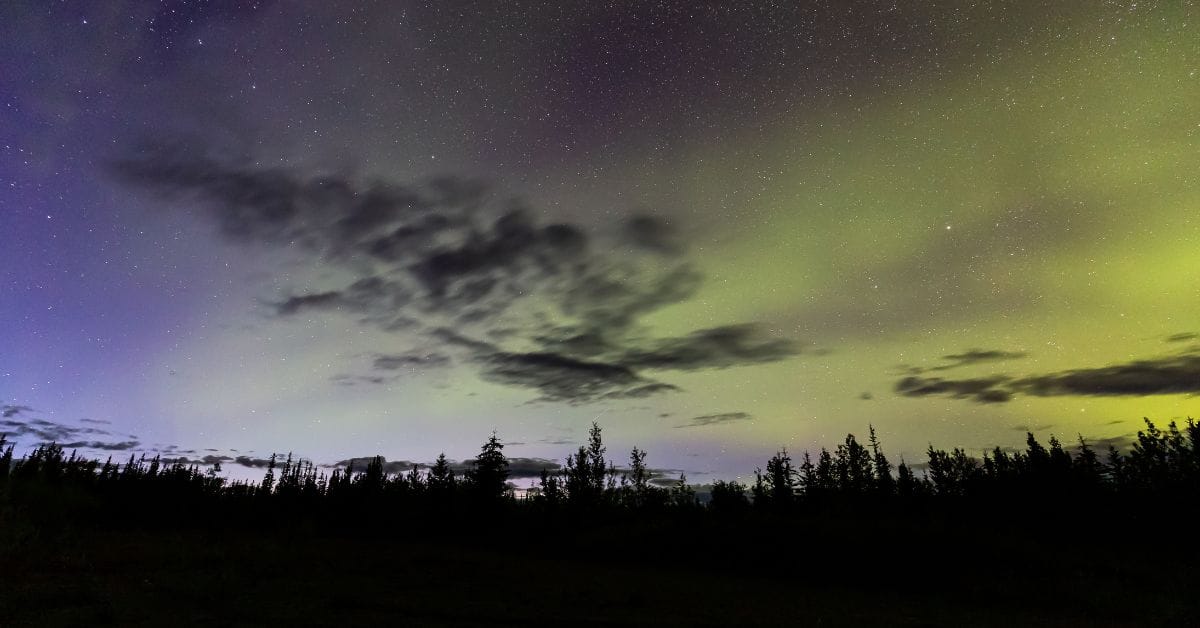In recent nights, the Northern Lights have once again illuminated Denmark’s night sky, astonishing photographers and skywatchers as far south as Funen and Zealand. The onset of darker nights and increased solar activity are contributing to the rare spectacle.
Northern Lights Return to Danish Skies
As Denmark transitions away from the summer’s light nights, darker skies have begun to reveal one of nature’s most captivating phenomena: the aurora borealis. Known as the Northern Lights, this colorful light display is typically reserved for Arctic regions, but under ideal conditions, it can be observed even from Denmark.
In recent nights, particularly between August 20 and 22, residents across the country captured the auroras in vivid images. Reports have emerged from as far south as Helgenæs on the Djursland peninsula, Kalundborg in West Zealand, and Nyborg. These sightings suggest that solar activity is on the rise, a necessary condition for northern lights at latitudes as far south as Denmark.
Triggered by Solar Storms
The aurora borealis occurs when charged particles emitted by the Sun, often during solar flares, interact with Earth’s magnetic field. This creates geomagnetic storms that funnel energy toward the planet’s polar areas. These particles then collide with gas molecules in the upper atmosphere, most notably oxygen and nitrogen, releasing energy in the form of glowing light.
Depending on atmospheric composition and altitude, this light appears in vibrant hues of green, purple, and red. According to meteorologists from DR (Danish Broadcasting Corporation), these recent auroras are the result of a moderate geomagnetic storm caused by a solar flare earlier in the week.
Data from the Danish Meteorological Institute (DMI) indicates that such events become more common around the equinoxes, in March and September, when Earth’s tilted axis aligns in a way that makes its magnetic shields more permeable to solar particles.
Catching the Northern Lights Requires Planning
Although sighting the Northern Lights is often portrayed as a spontaneous encounter, it typically requires patience and preparation, especially this far south. Several Danish photographers waited for hours in nighttime locations with minimal light pollution to capture the brief luminous glow in the skies.
A skywatcher near Teglværkskoven by Nyborg Strand spent over two hours awaiting the phenomenon before finally witnessing a short burst of auroral activity. He mentioned that such efforts are often met with disappointment, as the lights can vanish as quickly as they appear. However, the visual reward tends to outweigh the long wait.
Summer’s Bright Nights Have Ended
One significant factor contributing to the recent visibility of the auroras is the end of Denmark’s “bright nights,” a phenomenon occurring between May and early August when the Sun barely dips below the horizon during the night. This natural daylight extension prevents the sky from becoming fully dark, making astronomical observations virtually impossible.
With the bright nights officially concluded, the Danish sky is now dark enough once again to allow for stargazing, and occasionally, aurora-spotting, especially in areas with minimal urban light interference.
Peak Aurora Season is Approaching
Astronomical data shows that the highest number of geomagnetic storms historically occurs during the months surrounding the equinoxes. A look at solar activity over the past 100 years reveals that both the spring (March 20) and autumn (September 23) equinoxes witness the highest average number of strong geomagnetic storms per year.
As the fall equinox approaches, conditions grow increasingly favorable for aurora activity. Moreover, current data from NASA’s Space Weather Prediction Center shows a widening of the aurora ovals, the zones around the magnetic poles where auroras are visible, shifting slightly southward due to an uptick in solar activity.
Growing Interest in Solar Phenomena
With more people turning to night photography and astrophotography, interest in solar and atmospheric phenomena continues to grow among Danes. Observatories and weather services are reporting more inquiries from citizens eager to understand the science behind these light shows.
As we move into autumn’s darker months and near the next solar maximum, predicted for 2025, the chances of nocturnal displays of northern lights over Denmark are expected to increase.
According to Denmark’s national meteorological services, the auroral displays of the past week are a promising sign of a lively season ahead. They emphasize, however, that strong auroras visible to the naked eye in Denmark remain rare and are largely dependent on powerful solar activity, which fluctuates significantly.




